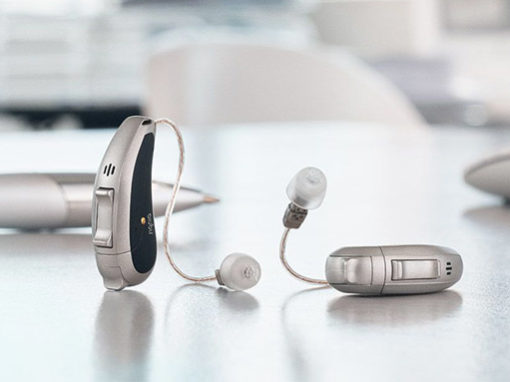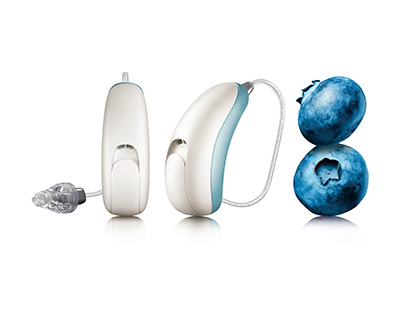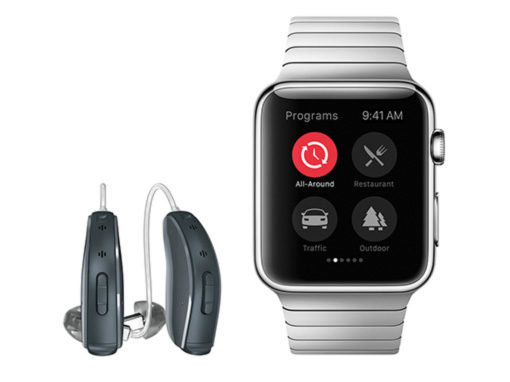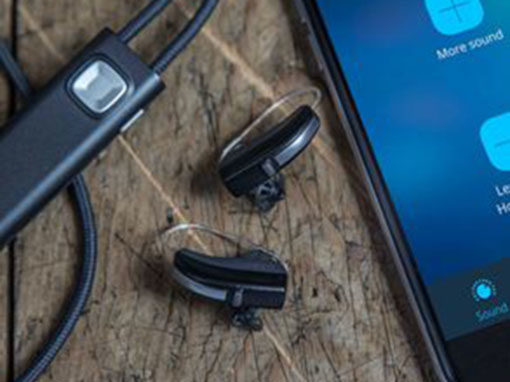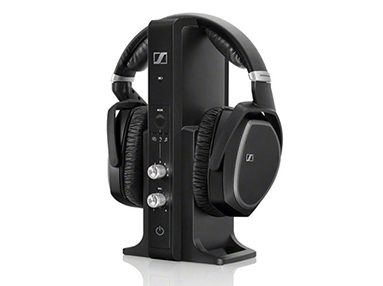
HEARING AIDS
Hearing aids are now much smaller and infinitely more powerful than ever before. Rechargeability and connectivity are the latest innovation in technology.
Improve your quality of life, its the new frontier!
Hearing Aid Technology
Today’s hearing aids are tiny computers that sit behind or inside your ear. Featuring highly advanced and sophisticated technology, most people are unaware that hearing aids are not just about making speech or sounds louder. They are marvels in blending, processing and manipulating your sound environment to enhance your listening experience; so that it is clearer and easier to hear and understand even in the most challenging listening situations.
Like many products today, there are different brands, levels of quality and technology available. Just like car manufacturers and models of cars, hearing aids have different features and benefits at each level to suit everyone.
Small and powerful
For many people the term ‘hearing aids’ conjures up mental images of big, bulky devices that are only marginally effective and provide minimal benefit. When it comes to modern hearing devices this simply is not the case. Just like mobile phones and other modern technology that make our lives easier, hearing aids are now much smaller and infinitely more powerful than ever before.

Adaptive feedback cancellation
Feedback is a high-pitched shrieking sound which occurs when a portion of the amplified sounds from the hearing device travels back to the hearing device’s microphone. The sound re-amplifies and loops continually through the system. The result is a loud tonal signal.
Feedback is more likely to happen when the volume of the hearing aid is increased, when the hearing aid is fitted incorrectly, or when the device is placed near a reflective device, such as a mobile phone. Adaptive feedback cancellation suppresses the tonal feedback signal.
Directional Microphones
Most older hearing aids featured only an omnidirectional microphone. Today’s hearing devices include omnidirectional and directional microphones.
An omnidirectional microphone amplifies sounds equally from all directions. A directional microphone amplifies sounds mainly from the direction the listener is facing. The result is an improved signal-to-noise ratio with improved speech understanding in background noise. This feature is especially useful when listening to speech in a noisy environment, such as a restaurant or at family gatherings.
Multichannel compression
An individual with a hearing loss detects a smaller range of sounds for some frequency bands compared to the ‘normal’ range. Multichannel compression maps the broad range of speech signals into the reduced dynamic range of hearing impaired listeners. Modern hearing devices adjust incoming sound volume. Softer sounds are amplified more than moderate sounds, and louder sounds may not be amplified at all.
Multiple programs
It is common for modern hearing devices to feature multiple programs, allowing the user to select the desired sound setting with the push of a button. Each program provides the ideal setup for a particular listening situation. Examples include:
- Noise
- Car
- Wind
- Quiet environments
- Talking on the phone
Some modern hearing devices adapt automatically to different listening situations providing the optimal program setting without you having to lift a finger. Some hearing devices require that the user manually switches ‘programs’ to select the ideal setting for their environment. Other devices automatically detect the optimal program and adapt automatically.
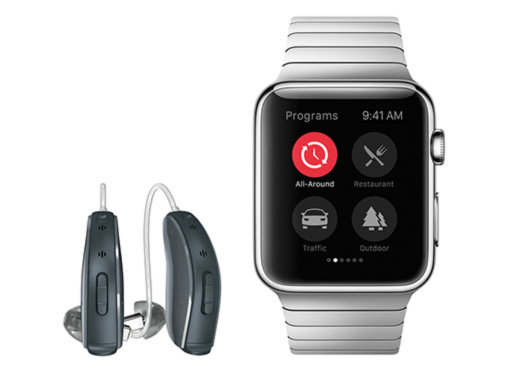
Digital Noise Reduction
As we go about our day, moving from one setting to another, we encounter a variety of background sounds. Some background sounds we may not wish to hear. Noise reduction systems differentiate speech from background noise. They make environmental noise less annoying for the hearing aid wearer, increase listening comfort and enhance speech recognition in difficult listening environments.
Binaural processing
Binaural Processing can enhance the wearer’s experience as the hearing devices can access information from both sides of the wearer’s head. Binaural processing is employed to ensure the hearing devices operate in sync, or to stream aural signals from one hearing device to the other.
Bluetooth
Many modern hearing devices employ Bluetooth technology to allow the user to connect wirelessly to a variety of Bluetooth-enabled devices, such as smartphones, GPS systems, computers and FM systems.
Bluetooth technology can improve the signal to noise ratio and eliminate feedback from the microphone as the signal bypasses the microphone and directly accesses the hearing device’s processor.
FM systems
Frequency modulation (FM) compatibility is a wireless feature that enables hearing aids to connect with FM systems. FM systems can be used in isolation or paired with hearing devices. They improve the signal to noise ratio without producing a feedback loop in the hearing devices. Compatibility is of particular importance when choosing hearing aids for children since these systems are regularly used in educational settings. They ensure that the teacher’s voice is understood above the general noise of the classroom.

